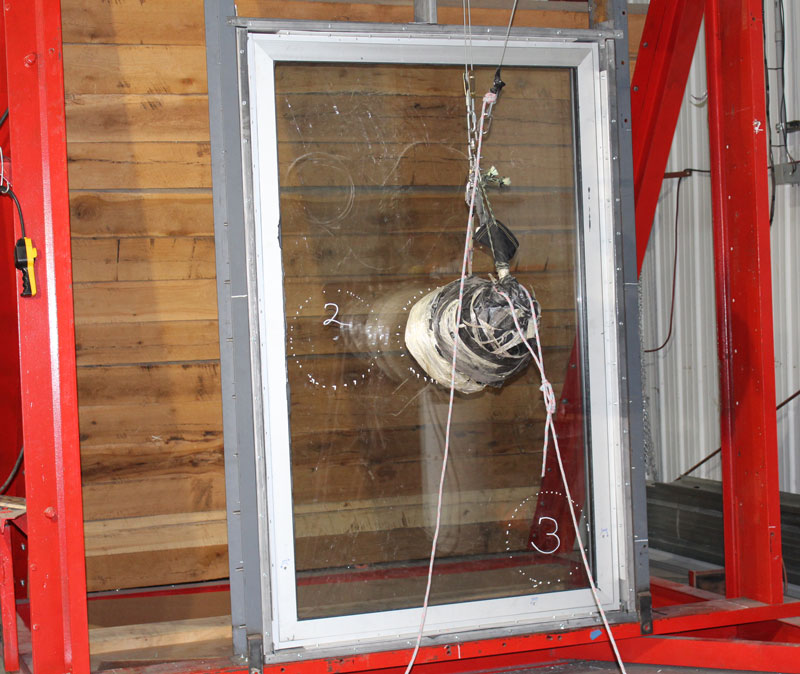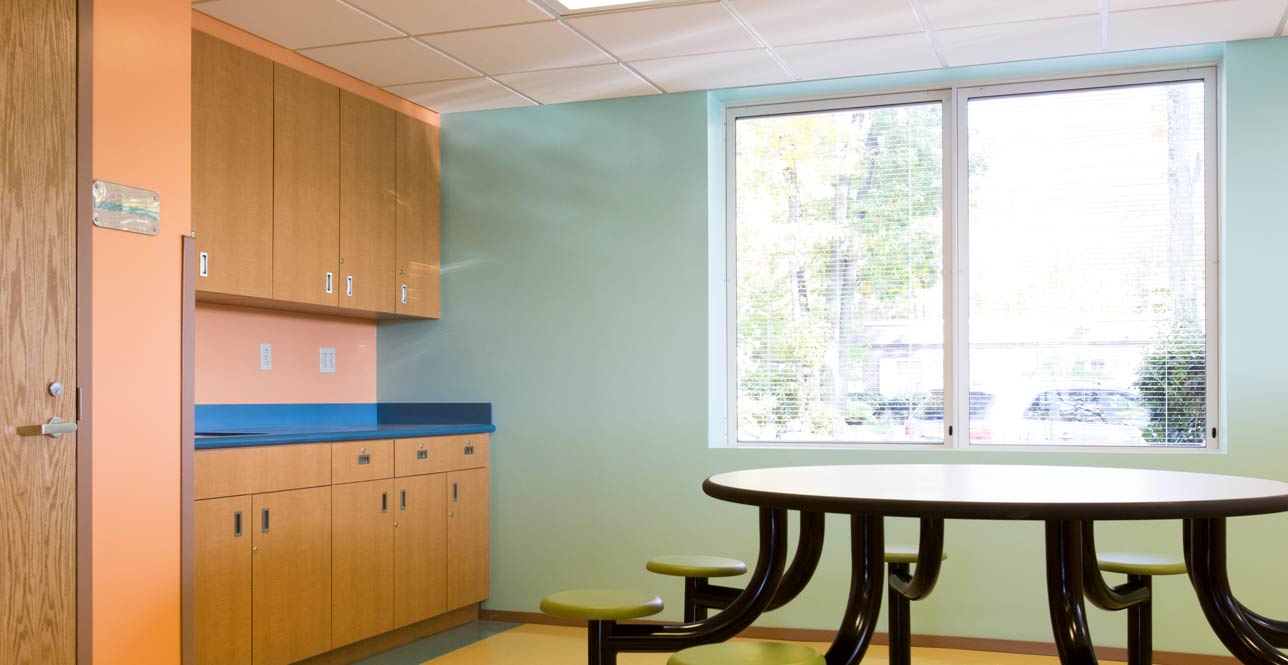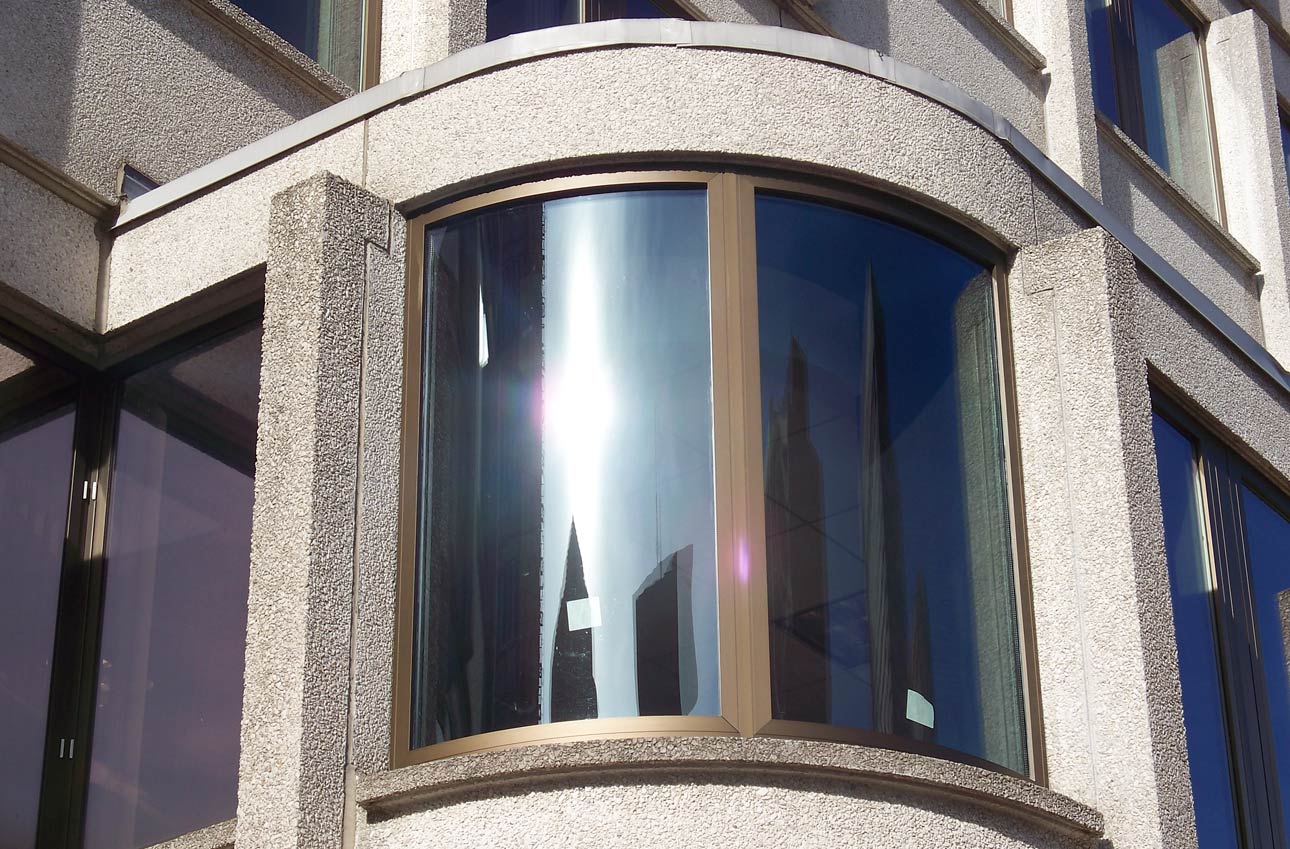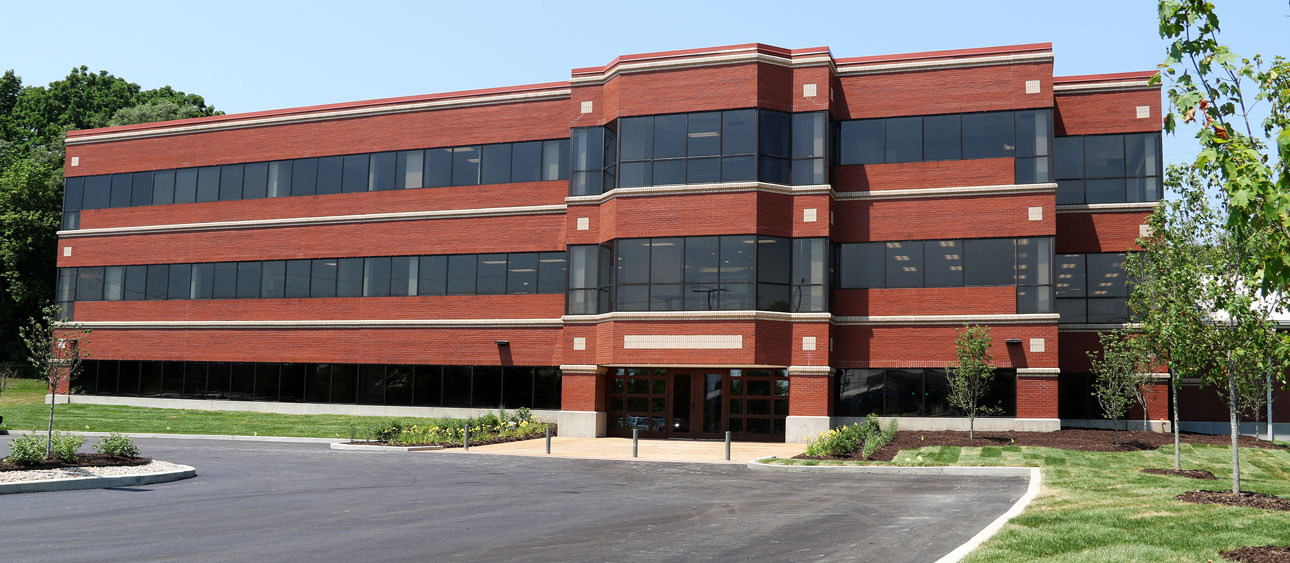Man-Made Threats Require High-Performance Glazing Systems
Unfortunately, building industry professionals must increasingly consider man-man threats and the impact of flying and falling glass when designing commercial and government buildings. These man-made concerns require mitigation steps to ensure the safety of people both inside and surrounding certain types of buildings, such as courthouses and federal buildings. Whether from an accidental gas explosion, an intentional bomb blast, gunfire, or even human impacts in a behavioral healthcare setting, flying shards of broken glass can be deadly.
Fortunately, there are security glazing options including interlayers and polycarbonate impact-resistant glazing that can be customized for various applications.
Human Impact Resistant Windows
Human impact-resistant / forced entry-resistant windows are built for performance and tested to meet AAMA ratings for AW-80 air, water, and structural performance, as well as the requirements for AAMA 501.8. Both the window glass and the frame are reinforced to withstand a Swinging Test Weight of 300 lb. weight, simulating the impact of a 250-lb. human.
The test requires the window to withstand three 2000 ft-lb impacts from the interior and continue to operate normally
What lies within these frames is uncommon strength constructed for performance, durability, and security. Human impact-resistant / forced entry-resistant windows can withstand potential dangers such as attacks from blunt or sharp objects, intruders, and exposure to chemicals or bodily fluids.
Featuring aesthetic hallmarks of traditional windows, human impact-resistant / forced entry-resistant windows have impact-resistant enhancements such as dual or triple glazing, impact, and mar-resistant polycarbonate or laminated glass, dual weather-stripping, concealed hinges, redundant locking mechanism, flush hardware, and sash.
Winco’s human impact resistant windows, often specified for healthcare settings, are remarkably deceptive, featuring a non-institutionalized looking framing system built tough enough to protect patients and property. Windows can be specified with anti-ligature hardware for added patient safety. These specially designed windows allow the sunshine in and provide a quiet, comforting environment.
The combination of energy efficiency with life safety features to protect patients makes these windows an ideal solution for occupants with mental health needs. They are recommended for behavioral health wards, as well as facilities that may house occupants prone to unruly behavior such as detention centers, jailhouses, prisons, and even some schools.
Blast Resistant Windows
Certain types of facilities and high-security buildings require a greater level of protection for both exterior and interior windows and door glass. These buildings include municipal and federal government facilities, financial institutions, religious centers, and nearby retail storefronts or restaurants that may sustain collateral damage from man-made concerns.
Whether from a natural gas leak or an explosive device, a bomb blast is an explosion that creates a shockwave rippling through buildings. Blast pressure can tear down walls, as well as break window glass. These broken glass shards will fly in multiple directions, harming anyone in their path.
The best form of protection against potential bomb blast threats is to design structures capable of withstanding an explosion. For windows, this usually means using a heavy-duty, high-impact transparent material such as polycarbonate, often abbreviated as PC. In general, polycarbonate will withstand an explosive impact. A moderate explosion may not shatter the glazing, but cause it to deform, whereas a more substantial explosion will cause breakage and fragmentation. The thickness of the material and the force of the explosion determine how well the polycarbonate glass responds.
As evidenced in the Oklahoma City bombing in 1995, when a terrorist bomb exploded in an urban area, it produced devastating effects, including structural and nonstructural damage to buildings, injuries, and 167 deaths. Many injuries resulted directly and indirectly from window glass failure. Flying glass shards flying and falling from fractured windows caused lacerations and abrasions. Secondary glass-related injuries occurred when the shock front of the blast wave passed into buildings through windows and doors vacated by fractured glazing. This event focused architects, engineers, and manufacturers on the design of blast-resistant glazing, now commonly used in courthouses, federal buildings, and buildings located in proximity to high-risk buildings.
Ballistic Glazing
Ballistic glazing also referred to as bullet-resistant glass or bulletproof glass, is designed to withstand penetration from bullets or other small projectiles. This type of glazing is made using a lamination process of heat and pressure. One or more interlayers of either polyvinyl or polycarbonate film are placed between glass panes with an adhesive, thereby creating a new finished product stronger than the individual elements. The material type used, as well as the number of layers, determine the level of protection provided by ballistic glazing.
Ballistic glazing will hold up to bullet penetration. When hit by a bullet or small projectile, the outer glass pane will break but remain adhered to the interlayer. The energy of the bullet is absorbed and dispersed, maintaining the integrity of the glass pane and ensuring visibility, even after impact.
Ballistic glazing is often used where gunfire may be a possibility, such as military bases, government buildings, courthouses, and high-security commercial buildings. Such security glass is also recommended for schools and universities.
It should be noted that blast-resistant design documents may require special permission to access, due to government security concerns. Architects may want to check with the Department of Defence, the Veteran’s Administration, and the General Services Administration for access information.
Winco offers blast-resistant windows that feature 2- to 4-1/2 inch frames and energy-efficient glass systems with laminated interlayer, behind a sacrificial exterior panel. This assures safety without the visual reminders of security screens, shutters, or barriers.
Learn about safety glazing options that are designed to withstand natural disasters here!
Download the impact-resistant windows lookbook to browse stunning architectural photographs and read the stories behind the designs!
Some of the security glazing documents mentioned in this blog are copyrighted and may be behind paywalls.
The Department of Defence (DoD) uses Unified Facilities Criteria (UFC) some of which are freely accessible (from within the United States, free of charge but subject to limitations to Transfer to Foreign Countries). Some of the UFC documents are classified as “FOUO” (For Official Use Only) and are only disclosed upon proof of “Need to Know”. Other documents in the UFC catalog are classified as “Secret” and require a security clearance to view.
The Veterans Administration maintains a Security Design Manual and some documents which are classified as “FOUO”.
The General Services Administration (GSA) maintains a similar catalog of Security Design Manuals which are only accessible upon demonstrated a “Need to Know” and signing a non-disclosure agreement. Some documents that are classified require a Security Clearance to view.
Ballistic Protection may require considering whether the Level of Protection is to UL-752, Department of Justice (DoJ), HP White or British Standards, or the Department of State.






